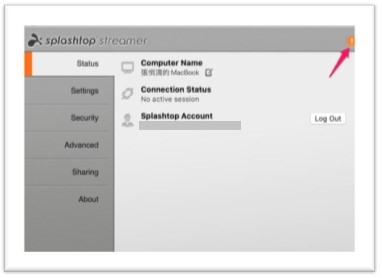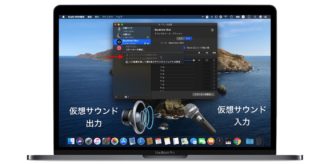

- SOUNDFLOWER FOR MAC CATALINA DRIVER
- SOUNDFLOWER FOR MAC CATALINA DOWNLOAD
- SOUNDFLOWER FOR MAC CATALINA FREE
To stop recording, either click on the stop button in your top menu bar or press Command + Control + Esc.To record a section of the screen, click and drag the cursor to create a window (you can resize or move it if you wish) and then click the “Start Recording” button in the middle of that window.To record the entire screen, click anywhere on the screen.You’ll get a pop-up window labeled “Screen Recording.” Click the arrow next to the record button for recording options, like choosing to record audio from your computer’s external mic or to show your mouse clicks.Click on File in the top menu (or, if QuickTime is in your dock, right-click on the icon) and select “New Screen Recording.”.(If you’re using macOS Catalina, opening up QuickTime Player and clicking “New Screen Recording” will automatically open up the Screenshot app, as above.) If you have macOS Mojave or earlier, you can use QuickTime Player to record your screen. You can also press Command + Shift + 5 to pull up the Screenshot bar at the bottom of the screen and hit the stop button in the center of that bar. To stop recording, you can either press the stop button in the right corner of the menu bar at the top of the screen or press Command + Control + Esc.When you’re ready, click “Record.” If you’re recording your whole screen, you can click anywhere on the screen to start recording.Part of your screen will be highlighted and you’ll see dotted lines marking what you’ll be recording. To record a section of your screen, click on the button that shows a screen with a dotted outline and a circle in the corner.To record the whole screen, click on the button that shows a screen with a solid outline and a circle in the corner.You can switch on your microphone, for example, set a timer, and choose where the recording will be saved. Click on “Options” to set your preferences.You can use it for grabbing still screenshots or for recording a video of your screen. A control bar will appear at the bottom of your screen.Press Command + Shift + 5 to open Screenshot.Record your screen in macOS Mojave or Catalina We’ll go through using that first, then cover the steps for using QuickTime. You can record your screen through QuickTime Player for all versions of macOS up to Mojave, but in newer versions of macOS (Mojave and Catalina), there’s a separate app called Screenshot which lets you record your screen. One more caveat: some apps, like Apple’s built-in DVD Player, will block you from doing any screen recording. You can, of course, turn on the external mic and turn up the volume, but this won’t give you great audio.
SOUNDFLOWER FOR MAC CATALINA DOWNLOAD
For that, you’ll have to download a third-party app, like Soundflower.

It also lets you record external audio - anything coming in through your mic - but the Mac’s built-in options don’t let you record internal audio. Luckily, Macs have this feature built in ( your iPhone does as well), letting you record part or all of your screen. You can support the developer via Patreon with a donation.Whether you want to save a video of what’s playing on your screen, share what you’re looking at with friends, or film a tutorial, recording your Mac’s screen can come in handy.
SOUNDFLOWER FOR MAC CATALINA FREE
Works on macOS 10.10+ including macOS 10.15 Catalinaīlackhole by Existential Audio is available now as a free download.Customizable to 256+ channels if you think your computer can handle it.
SOUNDFLOWER FOR MAC CATALINA DRIVER
This number is extendable up to 256 channels via driver rebuild options with sample rates up to 192kHz, with no additional latency. The driver plugs into macOS’ core audio architecture and can support up to 16 channels. Points that corroborate this are: it’s a free app downloadable from GitHub, up to 16 channels, sample rates up to 192 kHz, support for macOS 10.15 Catalina…īlackhole (not the Eventide reverb) follows the same concept as Soundflower. Maybe also the successor of Soundflower and it’s for free.Īs the development of Soundflower in recent years has not progressed, Blackhole could quickly take the place as the number one. With the new Blackhole app from the indie developer Existential Audio comes the next generation of audio routing app.

Existential Audio Blackhole is the next generation free audio routing app with macOS Catalina support and is the successor of SoundflowerĮvery musician with a macOS computer knows the application Soundflower with which one can change and customize the internal routing of audio.


 0 kommentar(er)
0 kommentar(er)
